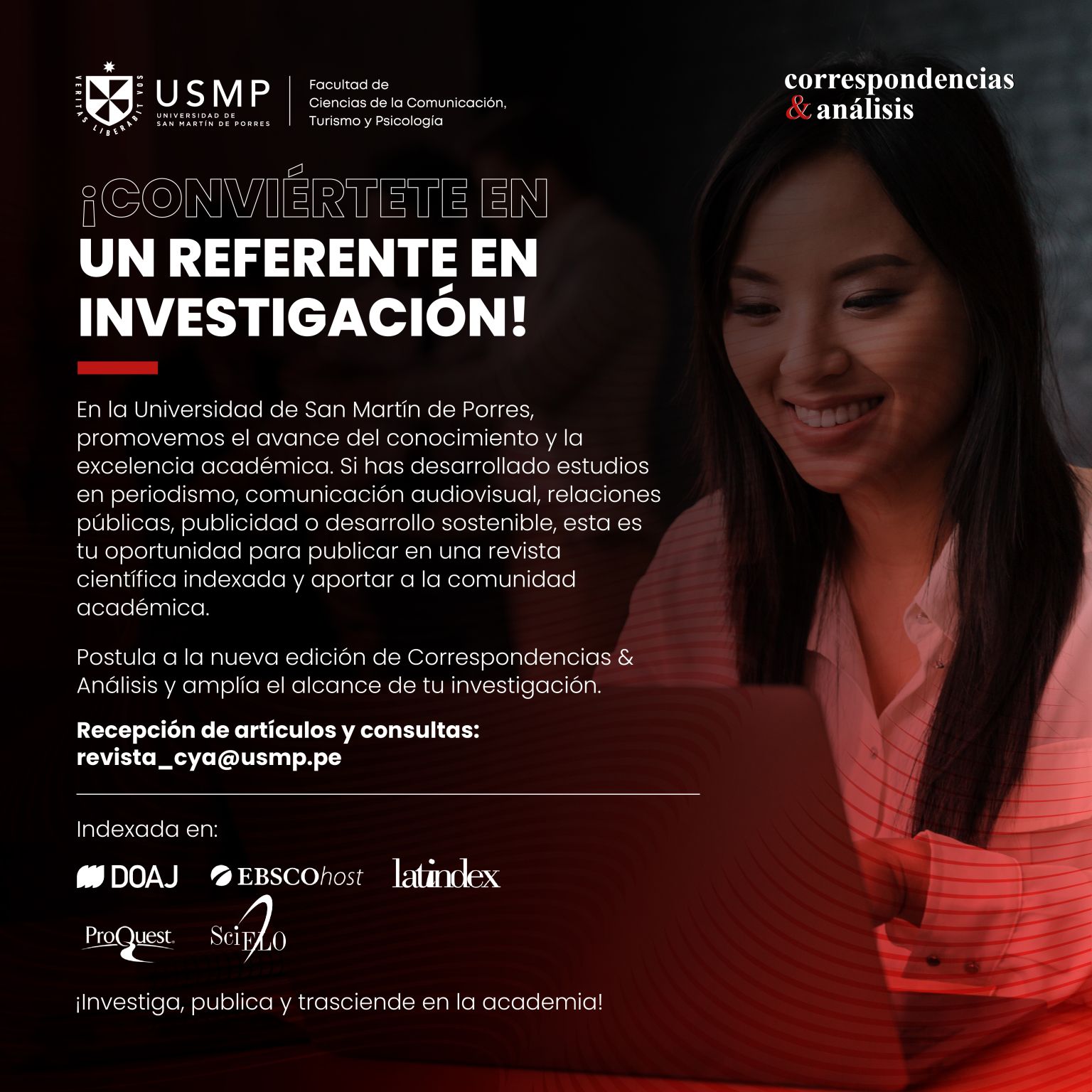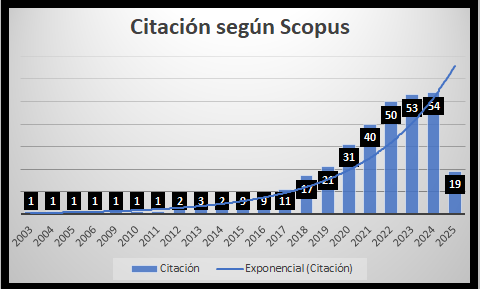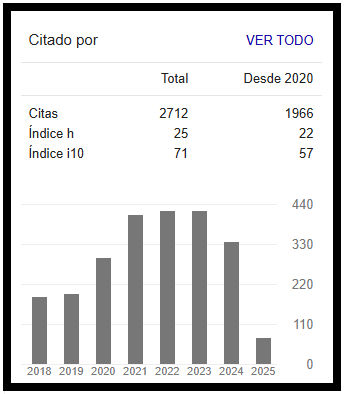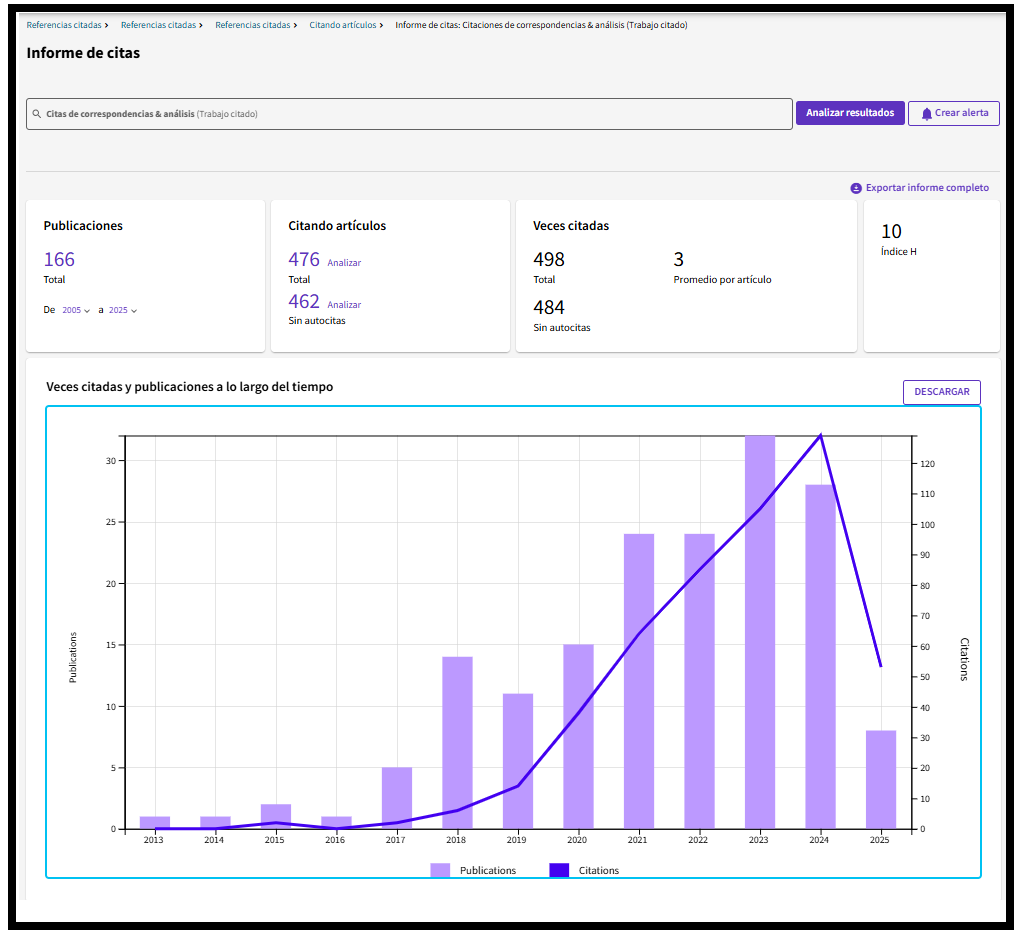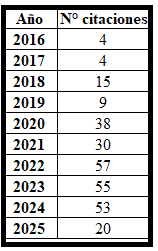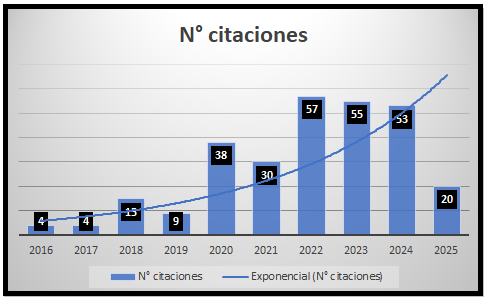Misinformation in the media and social networks: A violation of migrants’ rights
DOI:
https://doi.org/10.24265/cian.2025.n21.06Keywords:
media, social networks, migrants, human rights, vulnerabilityAbstract
This research was carried out using a qualitative methodology with a descriptive scope (Hernández Sampieri et al., 2014). In which, a documentary review of the texts of Laws 23.592, 24.515 and 25.871 from Argentina was carried out to identify strategies used to curb the circulation of false information in the media. Analyses of academic articles and reports by international bodies (IOM, IEO, UN) were also carried out. Among the most important findings we find that it is difficult to enforce the regulations in a total manner without incurring censorship cases, which means in most cases falling into a moral dilemma. The real implications include that migrants' rights should be protected from the dissemination of false information affecting them and, in turn, any accusation of censorship should be curbed; Carrying out actions that allow awareness not only to journalists and communicators, but also to the general public about the importance of managing the good use of information and not to replicate information that is known to be false, distorted or doubtful.
Metrics
Downloads
References
Althusser, L. (1968). Reading capital (B. Brewster, Trans.). New Left Books.
Andrada-Zurita, C. Y. (2023). Lo evanescente. Ensayo sobre la cultura de la cancelación y sus formas de violencia. Buenos Aires: Imprenta de libros. ISBN 978-987-8910-77-2
Andrada-Zurita, C. y Manrique Quirós, M.F. (2022). Discriminación, xenofobia y vulneración de los derechos de los migrantes, en Slavin Pablo y otros (comp.). Debates en Filosofía y Ciencia Política 2022: XXII Jornadas Internacionales en Filosofía y Ciencias Jurídicas y Sociales, Mar del Plata, Universidad Nacional de Mar de Plata, 32-41. ISBN 978-987-811-077-6.
Bailey, OG, y Harindranath, R. (2005). La alteridad racializada. Periodismo: cuestiones críticas, 274-286.
Bryman, A. (2016). Social research methods (5th ed.). Oxford University Press.
Caldas-Coulthard, C. R. (2003). Cross-cultural representation of ‘otherness’ in media discourse. In Critical discourse analysis: Theory and interdisciplinarity (pp. 272-296). London: Palgrave Macmillan UK.
Dervin, F. (2012). Identidad cultural, representación y alteridad. En The Routledge handbook of language and intercultural communication (pp. 195-208). Routledge.
Dubrofsky, R. E.; Wood, M. M. (2014). Posting Racism and Sexism: Authenticity, Agency and Self-Reflexivity in Social Media. Communication and Critical/Cultural Studies, v. 11, n. 3, p. 282-287. https://doi.org/10.1080/14791420.2014.926247
Ecker, U. K. H., Lewandowsky, S., Cook, J., Schmid, P., Fazio, L. K., Brashier, N., Kendeou, P., Vraga, E. K., & Amazeen, M. A. (2022). The psychological drivers of misinformation belief and its resistance to correction. Nature Reviews Psychology, 1(1), 1. https://doi.org/10.1038/s44159-021-00006-y
Ekman, M. (2019). Anti-immigration and racist discourse in social media. European journal of Communication, 34(6), 606-618. https://doi.org/10.1177/0267323119886151
Engels, F. (1973). The part played by labour in the transition from ape to man. In K. Marx & F. Engels, Selected Works (Vol. 3, pp. 66-77). Progress Publishers.
Esses, V. M. (2021). Prejudice and discrimination toward immigrants. Annual review of psychology, 72(1), 503-531. https://doi.org/10.1146/annurev-psych-080520-102803
Georgiou, M. (2013). Diaspora in the Digital Era: Minorities and Media Representation. Journal on Ethnopolitics and Minority Issues in Europe. 12 (4), 80-99. Retrieved from: https://www.ecmi.de/fileadmin/downloads/publications/JEMIE/2013/Georgiou.pdf
Hall, S. (1992). Cultural Studies and Its Theoretical Legacies. In L. Grossberg, C. Nelson, & P. Treichler (Eds.), Cultural Studies (277-294). Routledge.
INADI (2020). Structural racism in the media (Accessed December 21, 2022). Available at: https://www.argentina.gob.ar/noticias/el-racismo-estructural-en-los-medios
INADI (2022). New National Plan against Discrimination. (Accessed July 20, 2022). Available at: https://www.argentina.gob.ar/inadi/nuevo-plan-nacional
Iprofesional. (2018). INADI investigates Crónica TV's controversial G20 posters. Accessed December 21, 2022. Available at: https://www.iprofesional.com/legales/282397-El-INADI-investiga-las-polemicas-placas-de-Cronica-TV-sobre-el-G20
John, R. (2018). Freedom of expression in the digital age: a historian’s perspective. Church, Communication and Culture, 4(1), 25–38. https://doi.org/10.1080/23753234.2019.1565918
Johnson, H. M., & Seifert, C. M. (1994). Sources of the continued influence effect: When misinformation in memory affects later inferences. Journal of Experimental Psychology: Learning, Memory, and Cognition, 20(6), 1420–1436. https://doi.org/10.1037/0278-7393.20.6.1420
Kozyreva, A., Lorenz-Spreen, P., Herzog, SM, Ecker, UKH, Lewandowsky, S., Hertwig, R., Ali, A., Bak-Coleman, J., Barzilai, S., Basol, M ., Berinsky, AJ, Betsch, C., Cook, J., Fazio, LK, Geers, M., Guess, AM, Huang, H., Larreguy, H., Maertens, R., Panizza,… Wineburg, S. (2024). Toolbox of individual-level interventions against online misinformation, Nature Human Behaviour, 8, 1044–105. https://doi.org/10.1038/s41562-024-01881-0
Law 23.592. (1988). Discriminatory acts. Buenos Aires: Ministry of Justice and Human Rights, Presidency of the Nation. Recovered from: https://www.argentina.gob.ar/normativa/nacional/ley-23592-20465/actualizacion
Law 24.515. (1995). National Institute against Discrimination, Xenophobia and Racism. Buenos Aires: Ministry of Justice and Human Rights, Presidency of the Nation. Recovered from: https://www.argentina.gob.ar/normativa/nacional/ley-24515-25031/texto
Law 25871. (2004). Migrations. Buenos Aires: Ministry of Justice and Human Rights, Presidency of the Nation. Recovered from: https://www.argentina.gob.ar/normativa/nacional/ley-24515-25031/texto
Luna, M. (2020). “What are you doing, coronavirus?” : the tasteless joke that ended in a brutal fight in a Chinese supermarket. Infobae. Retrieved from: https://www.infobae.com/sociedad/2020/02/26/que-haces-coronavirus-la-broma-de-mal-gusto-que-termino-en-una-brutal-pelea-en-un-supermercado-chino/
Mannarini, T., Veltri, G. A., & Salvatore, S. (2020). Media and social representations of otherness. Switzerland: Springer International Publishing.
Marx, K., & Engels, F. (1977). The German Ideology (R. Pascal, Trans). Lawrence & Wishart.
Mastrini, G. (2011). “Argentina: Media System.” In The International Encyclopedia of Communication, edited by Wolfgang Donsbach, 1–2. Chichester, UK: John Wiley & Sons. https://doi.org/10.1002/9781405186407.wbieca052.pub2
Merriam, S. B. (2009). Qualitative research: A guide to design and implementation. Jossey-Bass.
Moore-Berg, S. L., Hameiri, B., & Bruneau, E. G. (2022). Empathy, dehumanization, and misperceptions: A media intervention humanizes migrants and increases empathy for their plight but only if misinformation about migrants is also corrected. Social Psychological and Personality Science, 13(2), 645-655. https://doi.org/10.1177/19485506211012793
Ninth Ibero-American Conference of Culture. (2006, July 13-14). Ibero-american cultural charter. Montevideo (Accessed November 9, 2024). Available at: https://derechodelacultura.org/archivos/13537
OIM. (2017). “I am a migrant” is presented in Argentina: IOM and INADI join forces against discrimination, xenophobia and racism. (Accessed July 20, 2022). Available at: https://www.iom.int/es/news/soy-migrante-se-presenta-en-argentina-la-oim-y-el-inadi-se-unen-contra-la-discriminacion-la-xenofobia-y-el-racismo
Orr, M., & Husting, G. (2018). Media marginalization of racial minorities: “Conspiracy theorists” in U.S. ghettos and on the “Arab street.” In J. E. Uscinski (Ed.), Conspiracy theories and the people who believe them (pp. 82–93). Oxford University Press. https://doi.org/10.1093/oso/9780190844073.003.0005
Pennycook, G., Epstein, Z., Mosleh, M., Arechar, A. A., Eckles, D., & Rand, D. G. (2021). Shifting attention to accuracy can reduce misinformation online. Nature, 592(7855), 590–595. https://doi.org/10.1038/s41586-021-03344-2
Pennycook, G., y Rand, DG (2022). Los mensajes de precisión son un enfoque replicable y generalizable para reducir la propagación de información errónea. Nature Communications, 13 (1), 2333. https://doi.org/10.1038/s41467-022-30073-5
Rauch, S., Schanz, K. (2013). Advancing racism with Facebook: Frequency and purpose of Facebook use and the acceptance of prejudiced and egalitarian messages. Computers in Human Behavior, v. 29, n. 3, p. 610-615.
Roozenbeek, J., y van der Linden, S. (2018). The fake news game: actively inoculating against the risk of misinformation. Journal of Risk Research, 22 (5), 570–580. https://doi.org/10.1080/13669877.2018.1443491
Santamaría Graff, C. C. (2017). ‘Build That Wall!’: manufacturing the enemy, yet again. International Journal of Qualitative Studies in Education, 30(10), 999–1005. https://doi.org/10.1080/09518398.2017.1312592
Tsoukala, A. (2017). Looking at migrants as enemies. In Controlling frontiers (pp. 161-192). Routledge.
United Nations. (1948). Universal Declaration of Guman Rights. Retrieved from: https://www.un.org/en/about-us/universal-declaration-of-human-rights
United Nations. (2007). Fribourg Declaration on Cultural Rights. Switzerland: University of Fribourg (Accessed June 6, 2022). Available at: https://www.unifr.ch/ethique/en/assets/public/Files/declaration-eng4.pdf
Zilinsky, J., Theocharis, Y., Pradel, F., Tulin, M., de Vreese, C., Aalberg, T., Cardenal, AS, Corbu, N., Esser, F., Gehle, L., Halagiera, D., Hameleers, M., Hopmann, DN, Koc-Michalska, K., Matthes, J., Schemer, C., Štětka, V., Strömbäck, J., Terren,… Zoizner, A. (2024). Justificar una invasión: ¿Cuándo tiene éxito la desinformación? Comunicación política, 1–22. https://doi.org/10.1080/10584609.2024.2352483
Downloads
Published
Issue
Section
Categories
License
Copyright (c) 2025 Carolina Andrada-Zurita

This work is licensed under a Creative Commons Attribution 4.0 International License.
In case the manuscript is approved, the authors retain the copyright and assign to the journal the right to publish, edit, reproduce, distribute, display and communicate in the country of origin and abroad by means of print and electronic media in different databases.
In order for this procedure to be recorded, the author must fill out the following formats:
Format 1 - Author data Format.
Format 2 - Affidavit on originality and authorization for the publication of articles Format.
Format 3 - Open Science Compliance.

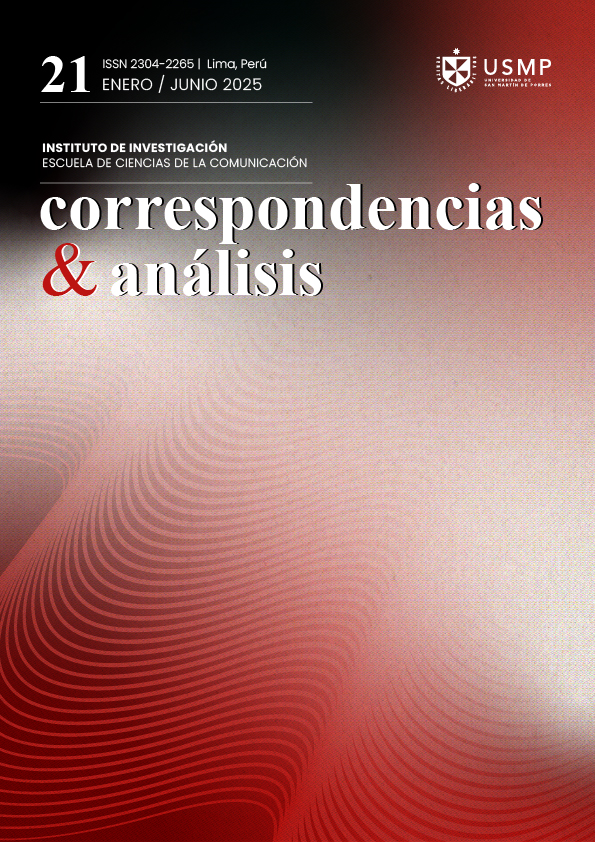





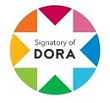
2.png)


